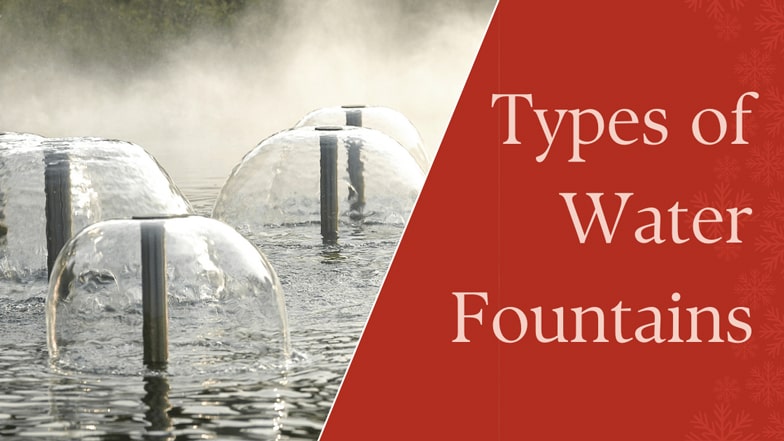The decor is an integral part of today’s architectural world. Whether homes, offices, or hospitals, every building is designed with expertise to suit the needs of every customer. One of the most common ways to add minor decorative items is in the form of water features. They are anything that contains a consistent flow of water in the form of fountains, waterfalls, artificial waterfalls, ponds, streams, garden fountains, and decorative stone figurines.
History
In the 18th century, people used many wall features, which were gravity and human-operated. Pumps most powered them. In modern times, these are powered by electricity. Few of them are solar-powered. Solar-powered water fountains have many benefits as they are eco-friendly, save money, and are ethical. The origin of water features dates back to the 15th Century in Europe when people had fountains in the backyard of their houses. They were considered to be a part of relaxation. The sound of the water flowing provided life to the still environment.
One can calm their mind by listening to the sound of the water and breathing fresh hair. This is why many rehabilitation and recreational centres are located near a lake or a pond. It attracts positive feelings and relieves negative thoughts. Waterfalls, lakes, and streams that provide an exquisite view are people’s favourite getaway on the weekend. People in metropolitan cities are pressured to work on weekdays and hence prefer a quiet getaway alone or with their loved ones to a waterfall. The sound of the water stream is so refreshing that all the week’s stress goes away. It facilitates better thought processes.
Water fountains
Apart from streams, lakes, and waterfalls, water fountains are also integral to water elements. They are used in yoga and meditation centres and are considered therapeutic. There are many fountains that one can decorate their house or office with. The most common are step fountains, figurine fountains, and bamboo fountains.
- A step fountain consists of multiple layers of rock and is embedded with different colours of LED lights. It gives a grand look, which is why it is placed in front of many restaurants and bungalows. Tabletop fountains are smaller in size. They are generally pot-shaped and can be placed anywhere in an environment. It can be placed on both sides of an entrance door, on top of a corner shelf, or even in the backyard. The location of a water feature depends on the model and size.
- Figurine fountains are carefully carved sculptures mostly resembling roman figures. These are the most expensive ones as they are very artistic and require a lot of thought and effort while curating.
- Bamboo fountains are the oldest form of fountains. These fountains add a classic and beautiful charm. These fountains are preferred by those who do not want to lose their ancient heritage and traditions since bamboo is revered. Bamboo served as the foundation for the fountain’s design. In the past, tilting bamboo sticks were employed to create water flow because they resembled ornamental goods. These fountains gradually evolved in the modern era to become stone, solar, and electric fountains. This fountain’s bottom is fitted with a small battery to maintain water flow.
- Glazed LED water fountains are gaining popularity as they consume less electricity and are budget-friendly. These water fountains are reasonably priced and cost little to operate because they run on batteries. Since LED consumes less energy, a low-wattage battery may supply all the power needed to keep the water flowing. At entrances, these fountains are positioned on either side of the door. They have the effect of cooling. If there is a remote, the lights can be altered in colour. This is a more sophisticated model of the LED water fountain. An opening for the rush is present in a straightforward LED fountain, and the light is only one colour—typically fluorescent.
